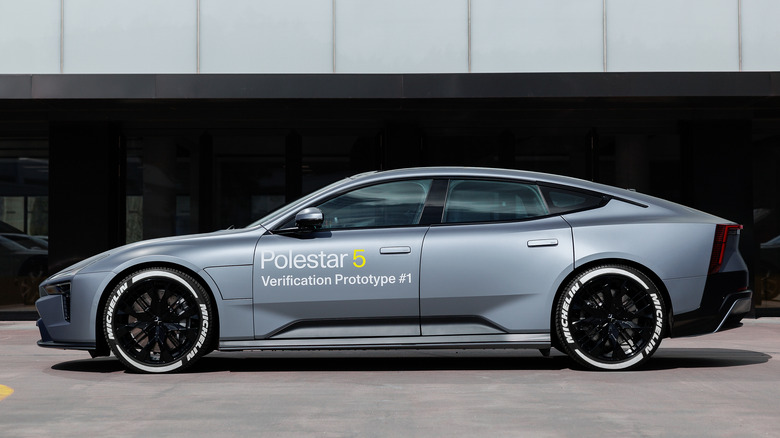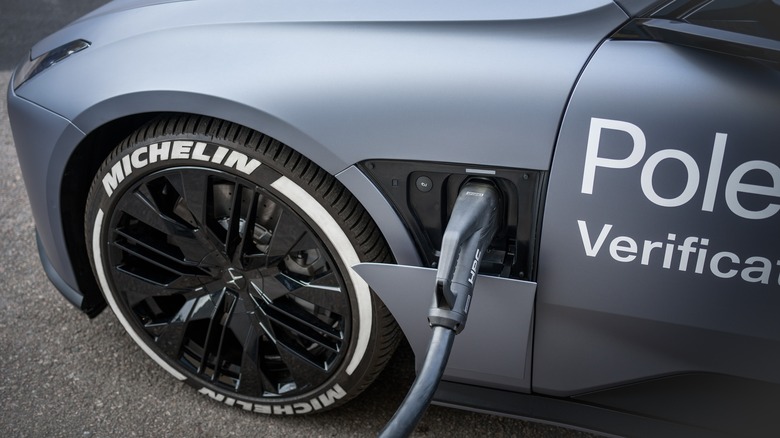Polestar's 10 Minute EV Charging Teases An End To EV Skeptics' Biggest Complaint
In November of last year, Polestar announced that it had joined forces with fast-charging battery tech company StoreDot in an effort to make Polestar's EVs charge exceptionally fast. That technology was called Extreme Fast Charging (XFC) and initially posited that it could replenish 100 miles of range in an EV in as little as two minutes by 2032. According to the results of tests done by Polestar, the two companies are getting much closer to the goal of speedy charging. After all, one of the biggest issues people tend to have with EVs is that it takes too long to charge compared to just filling your car up with gas.
Per a press release from Polestar, XFC technology charged a custom EV battery from 10% to 80% in 10 minutes. It claimed the charging speed actually increased to over 370 kW during the test. More conventional chargers peak at 350 kW.
As quick and easy as filling up at the gas station
The car in question was a prototype of the Polestar 5, and the battery was a 77 kWh pack that was made for the test. Since all of the equipment used in the test was custom-built for the experiment, this technology does not have an exact release date, but the test sure is promising for EV technology as a whole and anyone who has been on the fence about buying an EV because of fears about charging speed.
Polestar's CEO Thomas Ingenlath thinks that XFC tech will evolve to be as convenient as getting gas, stating: "With this new technology, on longer journeys when drivers do stop they'll be able to spend less time charging and be back on the road faster than before. In fact, that stop time will be more akin to what they experience with a petrol car today."
It's an exciting development, to be sure. However, there's also the question of getting this technology not only into people's driveways but also implementing enough charging stations to have a sustainable charging infrastructure. High-speed charging technology is great, but if your car doesn't support it or the nearest supported charging station is too far away, the technology might as well be functionally useless to the average driver.

